Last updated: January 27, 2025
Article
Forgotten Footsteps: The Role of Chinese in Yosemite's History
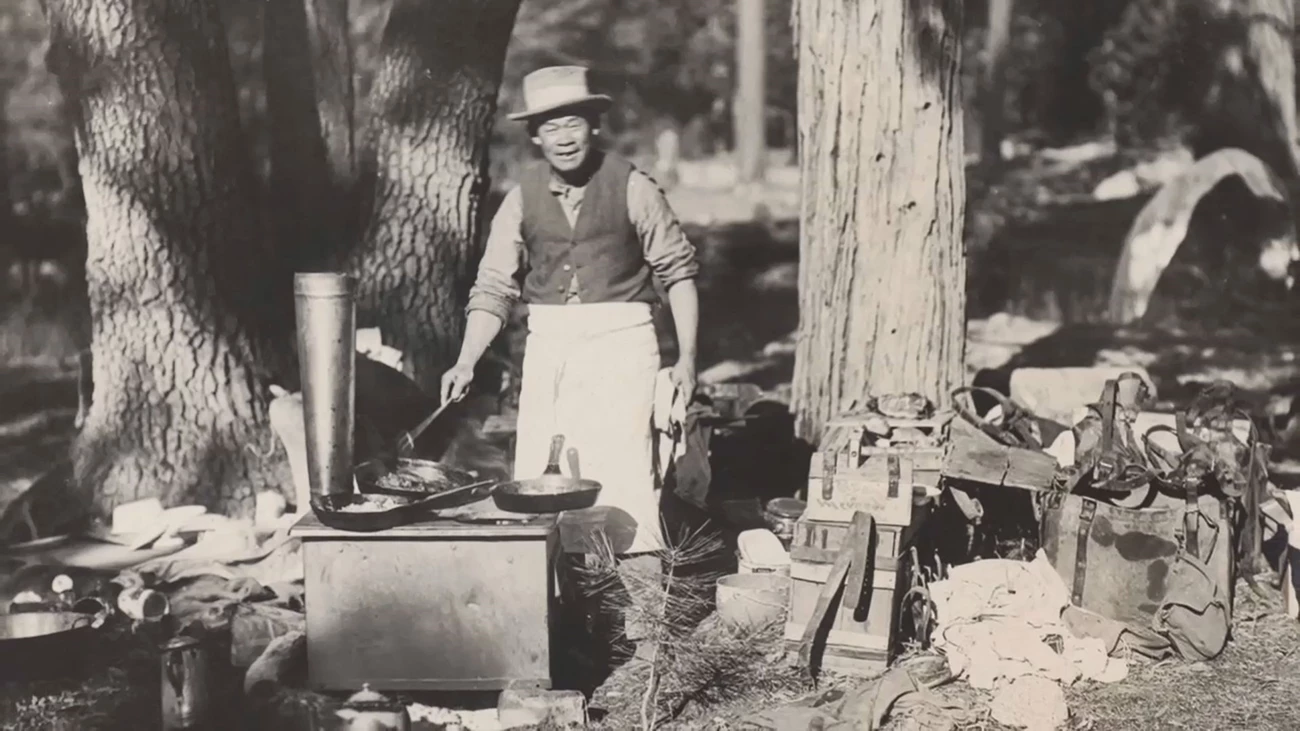
Photo courtesy of the Bancroft Library
Chinese people moved to California during the Gold Rush, but by 1850 the Foreign Miners Tax forced many Chinese to search for work outside the mines. Chinese workers, some immigrants and some American-born, began arriving in the Yosemite area around this time. Some worked in nearby timber camps and in road construction. Resilient and skilled, they soon found work, and a home, in Yosemite. Here, Chinese filled a growing need for essential work such as cooking, farming, cleaning, ranching, and road building. Before Yosemite was designated a national park, Chinese people were putting their considerable craftsmanship into action by working on intricate stonework for the Tioga Road and roads around Wawona. As tourism developed in the park, Chinese Americans were integral to the new services being provided.
At the Wawona Hotel, the Washburn family hired over twenty Chinese workers each summer. These workers grew a produce garden, operated the laundry, and staffed the kitchen. The Washburn family, including Henry’s grandniece Wawona Washburn, made friends with these community members, overcoming language barriers and cultural differences.
“Almost every year there would be a few young Chinese, newly arrived from China... eager to learn to speak the English language... NEVER did we ever manage to speak their difficult language! Our tongues always tied, much to the merriment of our students. Each summer was the same. They learned — we didn’t.” - Wawona Washburn Hartwig, From China with Love, Unpublished article
The laundry building, and the bunkhouse where Chinese workers lived, were situated downhill from the hotel. It is likely early visitors didn’t see much of the Chinese workers who washed linens, grew food, and prepared meals.
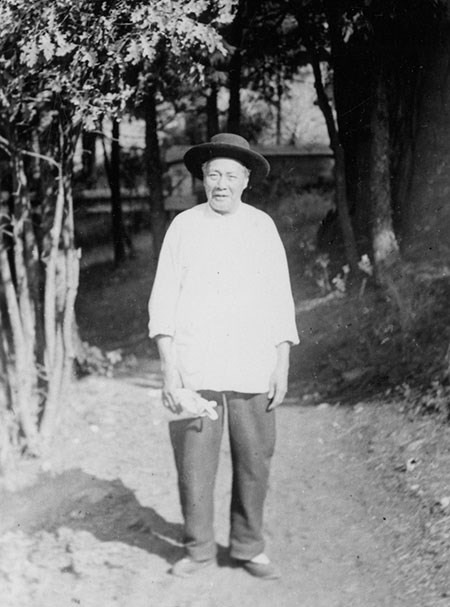
Culinary Legacies
Ah You
“Come into the kitchen, Your Excellency, and meet Ah You, our most excellent cook.” – John Washburn to President William Howard Taft, 1909.
Born in China in 1848, Ah You came to California at the age of 21. After working various jobs in San Francisco and the San Joaquin Valley, he arrived in the Yosemite area.
In 1886, Henry Washburn (whose family owned the Wawona Hotel) heard of Ah You's amazing cooking skills and offered him the position of head chef. While Ah You and his fellow Chinese workers were sought after for their hard work and talent, they were kept out of view and out of mind for most visitors.
Ah You ran the Wawona Hotel's kitchen until 1910 and then remained on staff, finally departing in 1933 (47 years later!) when a change in hotel ownership resulted in the dismissal of all Chinese employees. However, the Washburn family maintained a home in Merced for their former staff, and personally attended Ah You's funeral when he passed away in his 90s.
Several presidents and countless celebrities dined in the opulent Wawona Hotel dining room, which at its peak served 450 guests each night. For almost half a century, Ah You and many other Chinese cooks prepared elegant food for their diners. A lunch menu from 1918 offered stuffed lamb, beef meat pie, steak, and dessert offerings including apple pie and sago pudding with lemon sauce. If you had been a waitress here during the late 1800s and early 1900s, you might have heard your table orders "acknowledged more often than not by translation into Chinese language."
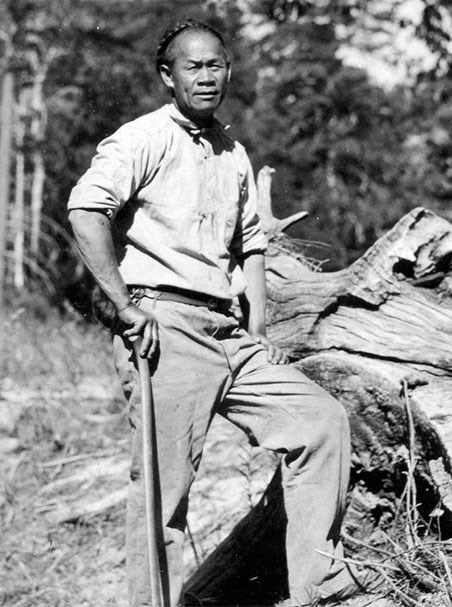
Tie Sing
Born to Chinese immigrants in Nevada, Tie Sing spent most of his career cooking for the geologists and mapmakers of the U.S. Geological Survey during the late 1800s. In the early 1900s, word of his backcountry feasts reached Stephen T. Mather, assistant secretary of the Interior. Sing was hired to cook for Mather’s wilderness adventures in Yosemite and Sequoia National Parks with a group of hand-picked influential leaders during the summer of 1915 and 1916. Sing’s acclaimed feasts earned him wide admiration and contributed to Mather and the group’s success in convincing Congress to form the National Park Service one year after their first wilderness trip together in 1916.
“To me, Tie Sing had assumed apocryphal proportions. The extraordinary recitals of his astonishing culinary exploits had been more than I could quite believe. But I believe them all now, and more. I shall not forget that dinner — soup, trout, chops,fried potatoes, string beans, fresh bread, hot apple pie, cheese and coffee. It was the first of many — equally elaborate, and equally appreciated.” - Robert Sterling Yard, Mather Mountain Party Trip of 1916
In 1899, the US Geological Survey named a 10,552 foot peak along Yosemite’s southeastern boundary after Chef Tie Sing. It memorializes him as a contributor to numerous mountain expeditions and for his renowned culinary expertise.Today, Yosemite National Park and the Chinese Historical Society of Southern California host regular Yosemite pilgrimages to honor early Chinese contributions in the park. Attendees range from descendants of early Chinese immigrants, to visitors interested in learning more about the park’s Chinese history.
Road Builders
At the end of 1874, Henry Washburn and associates took on the construction of a toll road from what is now Wawona to Yosemite Valley, contracting with a firm that hired mostly Chinese immigrants. Working through the snowy winter of early 1875, using only hand-picks, shovels, axes, wheelbarrows, and blasting powder, they completed the 23 mile-long (37 km) Wawona Road in only 4 1/2 months!
In 1882 and 1883, a crew of mostly Chinese workers built the 56-mile (90 km) Great Sierra Wagon Road, most of which is now Tioga Road. The crew worked in rugged terrain on foot, without machinery, using dangerous blasting powder to clear the route, and hand tools to build retaining walls. According to one report, 250 Chinese and 90 European American laborers completed the road in just 130 days.
-
Chinese History in Yosemite
Did you know that early Chinese immigrants played an important role in shaping the Yosemite that we know today? Join Park Ranger Yenyen Chan on an exploration of this impressive and surprising history.
- Duration:
- 7 minutes, 32 seconds
Restoring a Building and a Piece of Yosemite History
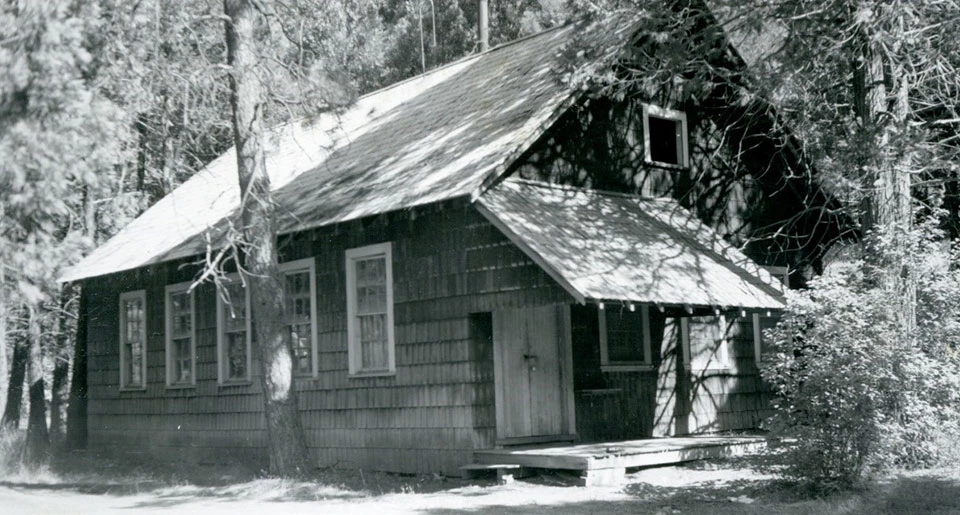
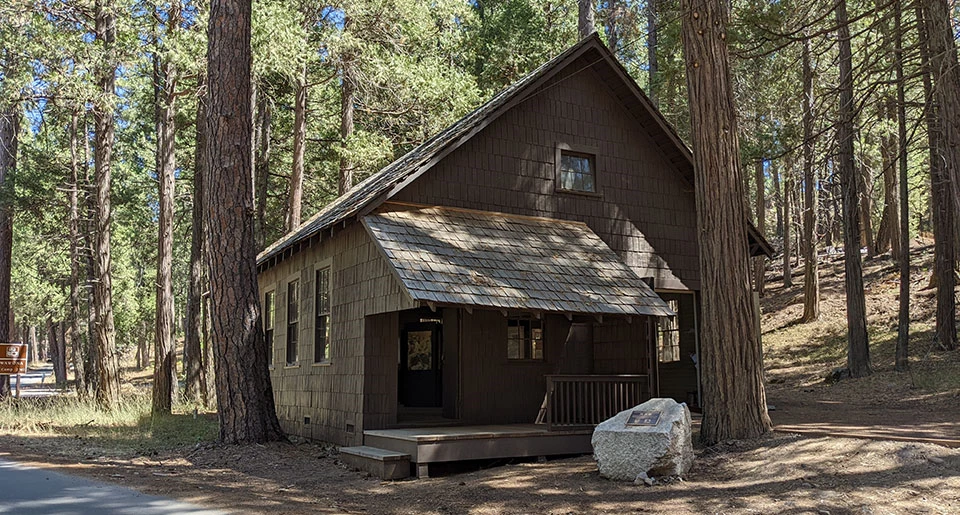
Top image
Chinese Laundry, 1947.
Bottom image
Chinese Laundry, 2022.
With the exploding population of California miners and other newcomers, Chinese immigrants filled a growing need for washing and ironing, as well as other labor-intensive jobs previously mentioned. Long hours, moving heavy laundry loads, and standing next to hot stoves made for exhausting work. By 1880, 75% of all laundries in California were Chinese owned. Amidst this success, discrimination also grew. In 1882, the Chinese Exclusion Act prevented Chinese laborers from entering the country. Extensions of the Chinese Exclusion Act in 1892 and 1902, and many other restrictive laws, led to a significant decline in Chinese immigration until these laws ended in 1943.
In Yosemite, the Chinese Laundry building located in Wawona was constructed in 1917 to serve the Wawona Hotel, replacing an earlier, smaller Chinese laundry. While the building was new, the employees were not; head laundrymen Ah Yee and Ah Wee worked for years prior at the hotel. From 1918 to 1933, Chinese workers cleaned linens, towels, and clothing for hotel guests here. During busy summers, up to five hotel employees labored in this workshop, keeping up with high demand. They boiled water on wood-burning stoves, stirred steaming vats of laundry with large wooden paddles, and pressed sheets and garments flat with hot, heavy irons that were also heated on wood stoves. Later, the building went on to be the center for laundry for other hotels in the area, but then eventually went unused.
In the 1950s, the National Park Service converted the Chinese Laundry building into a carriage shop, where original and replica wagons and stages were restored. Later the building was used for general storage of miscellaneous items and mostly went unused and unoticed. Today, the building is part of the Yosemite History Center; a collection of historic buildings in Wawona that share different stories of how Yosemite was developed. The Chinese Laundry was restored in 2019 by the National Park Service, with the financial support of the Yosemite Conservancy, and highlights a previously forgotten story in Yosemite’s rich and diverse history. It now houses interactive displays and exhibits that celebrate the Chinese workers who helped make Yosemite what it is today.

In addition to interpreting the history of Chinese people in Yosemite, another goal of the project in addition to restoring the building itself, was to recreate certain aspects in the interior as they would have been in the early 1900s. Physically, park historic architects fixed up dilapatated parts of the building and returned it to its natural state. Inside, there is an old iron stove which would have been used to boil water for cleaning clothes, period clothing is hung across a laundry line, and interactive exhibits allow visitors to become more immersed with the history of the building and the Chinese immigrant story. There are hands-on displays, a calligraphy brush and ink and a Chinese seal to stamp Chinese characters that spell out "Yosemite" on paper. The goal is for visitors to have a greater opportunity to learn more about the heritage and practices of the time.
The building is open to visitors from late spring through early fall.

-
Uncovering Yosemite's Chinese History
Park Ranger Yenyen Chan shares the history of the Chinese Laundry building located in Wawona, along with information and artifacts uncovered that have taught us more about the role Chinese played in Yosemite's history.
- Duration:
- 3 minutes, 30 seconds

